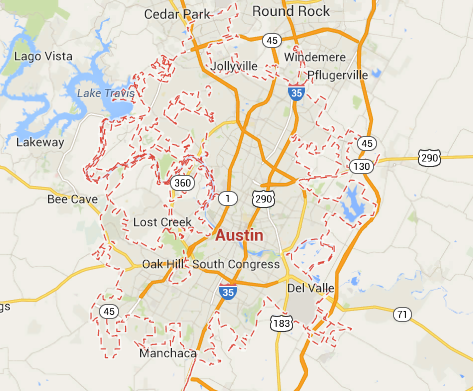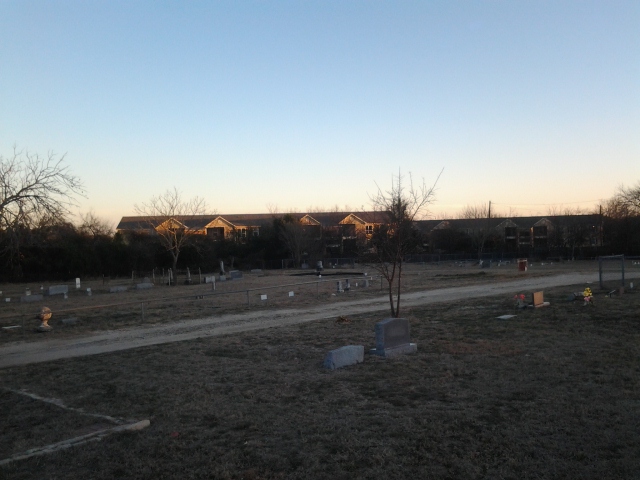This post is introduced by Dr. Harel Shapira, where he discusses the aims and motivations for his course SOC 388K: Field Methods. We will also hear from three Sociology graduate students who are currently taking the course. They will briefly describe the individual projects they are pursuing in the North Austin neighborhood of Rundberg.
Dr. Harel Shapira
The primary motivation for this course comes from a desire to provide hands on training for graduate students in ethnographic methods (participant observation and in-depth interviewing). In that sense, with the input and support of Dr. Christine Williams and Dr. Javier Auyero, we thought we would transform the ethnographic methods course into a year-long sequence, with one semester focusing on reading ethnography and the second on doing ethnography.
At the end of the day, its also my effort to mimic (in the best way as I can) training I received as a graduate student at Columbia University from Herb Gans. Gans (a student of the great Chicago ethnographer Everett Hughes) embraced the “Chicago School” way of doing things: get your hands dirty. He modeled his own practice based seminar on a syllabus he still had from the class he took with Hughes back in 1947, and I myself have now modeled my class on that same syllabus. From day one, when students hit the field, they are required to conduct at least five hours of fieldwork every week; and submit field notes weekly. On certain weeks they need to turn in reports which ask them to direct their research toward a particular task, such as conducting a life history or attending a public gathering.
The majority of class time is spent with students providing updates on their research and engaging in a collective conversation on issues and ideas that come up in the process of data collection. Beyond this, the course has a basic motivation to have students go out and learn about the communities in which they live. I think this is something all students should do, but has a particular importance when they are at a public institution such as ours, whose mission is and should be to learn about, learn from, and perhaps give something back to the larger public. Our class is focusing on the Rundberg neighborhood of North Austin, a choice inspired by our own Dr. David Kirk who has been working in the area as part of the Restore Rundberg initiative. Dave’s help in both setting up this class and also providing guidance to myself and the students, has been invaluable.
There is a second motivation here, which is that (unfortunately) very little sociological research has been carried out in Texas. Indeed, and especially when it comes to urban sociology, a couple of cities (Chicago and Los Angeles, most notably) dominate the field. Without wanting to criticize all the foundational work that has been produced out of those places, I do find it both morally unfortunate that our knowledge base is limited. But also, it raises scientific issues if our models of urbanization and urban poverty are drawn from a limited set of cases.
It would therefore be wonderful if we can begin to train a group of students who will begin to use Austin, and the wider scope of Texas (which currently has four of the fastest growing cities in the states) as a kind of laboratory in much the same way that Everett Hughes and his students used Chicago as a laboratory.
Luis Romero
I am spending most of my time at a cemetery in Rundberg that was founded in the 1850’s. The cemetery is currently maintained by a non-profit association that provides full-service burials (casket, tombstone, fees, etc.) for under $700. There is, however, one rule that must be followed should you want a family member buried there: that person must be related to someone already buried at the cemetery. As part of my fieldwork, I have been helping members of the association by completing various tasks around the cemetery, such as the mapping of individual graves and placing flower holders on grave sites.
While I have not yet figured out my “puzzle,” I am interested in seeing how the cemetery and the association deal with gentrification – money was offered to buy the cemetery in order to build businesses in that location – and what residents of Rundberg think about the cemetery and its policies on who can be buried there.
Katherine Jensen

Heritage Hills is a residential neighborhood just east of I-35, that sits between Anderson and Rundberg Lanes. I have gotten the sense it is unusually racially diverse in the extent to which white and black Austinites share a small residential neighborhood. Yet, in spite of the racial heterogeneity among the community, its demographic makeup and economic situation varies drastically from the area neighboring Heritage Hills to the north, on the other side of Little Walnut Creek. In comparison, that area is over 80% Hispanic (by some sources), the medium household income is only $27,746 ($50,000 less than in Heritage Hills), and 15% of residents live below the poverty line (compared to 5.9% in Heritage Hills).
Age also contrasts greatly; in Heritage Hills, the median age varies from 32-62 (with most residential tracts in the 40s), while across the creek it is 27. Thus, while Heritage Hills is diverse in some senses, how it differs from its neighboring community to the north seems to be much more marked then any differences internal to the neighborhood.
During Field Methods, I’ve been working on getting a sense of Heritage Hills, how it’s changed over time, what people care about, and how they see their community. In particular, I’m interested in how Heritage Hills residents imagine their community, how they imagine their neighbors across the creek, and the dialectic between the two. In other words, how do Heritage Hills actually make sense of these statistical realities on the ground?
Corey McZeal
I’m studying the North Austin Rock Gym in Rundberg. As a beginner to rock climbing, I would like to explore the process of becoming a climber, learning about the subculture and how the climbers see themselves as opposed to other types of athletes. I am also interested in the particular demographic that participates in this activity; there are already definite gender, racial, and age patterns that I’ve been able to observe in my short time at the gym. What makes climbing appealing to this particular type of person, and what keeps them coming?
We will revisit these projects at the end of the spring semester to see how they have evolved and where they might be headed.



